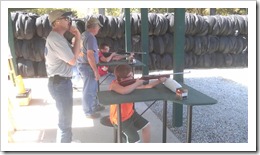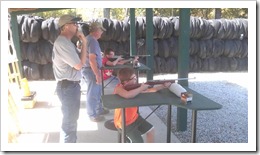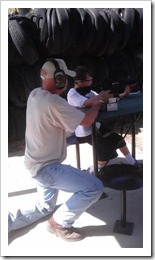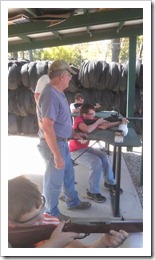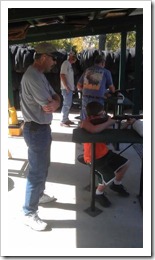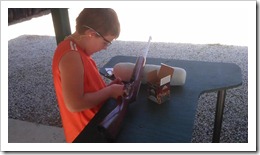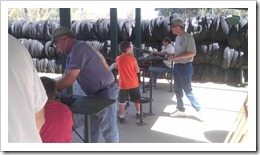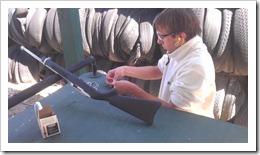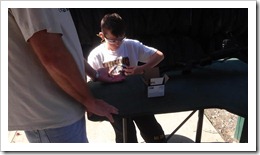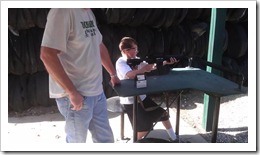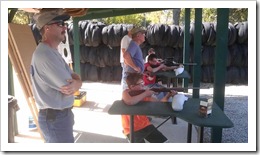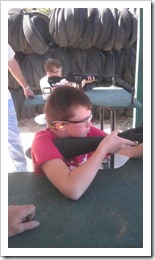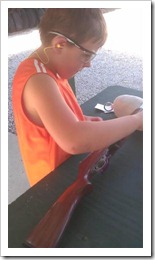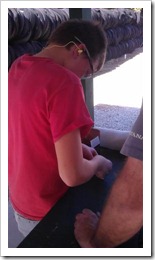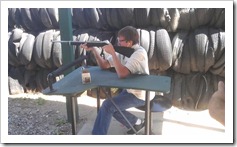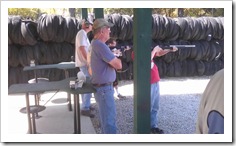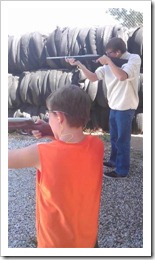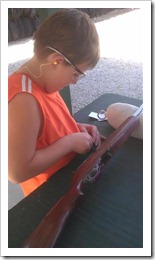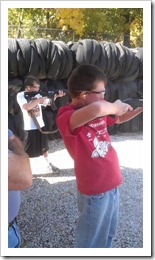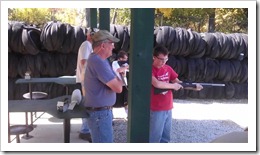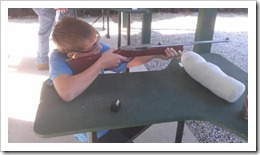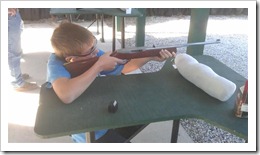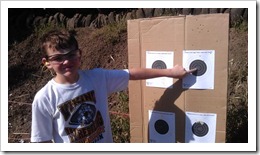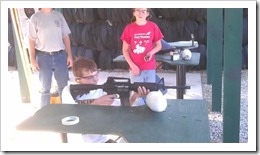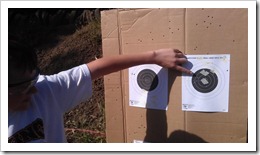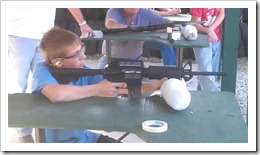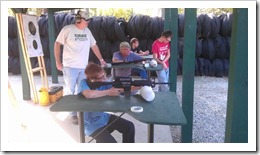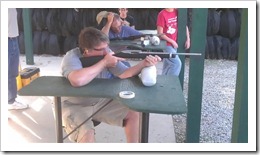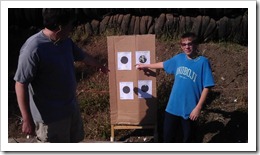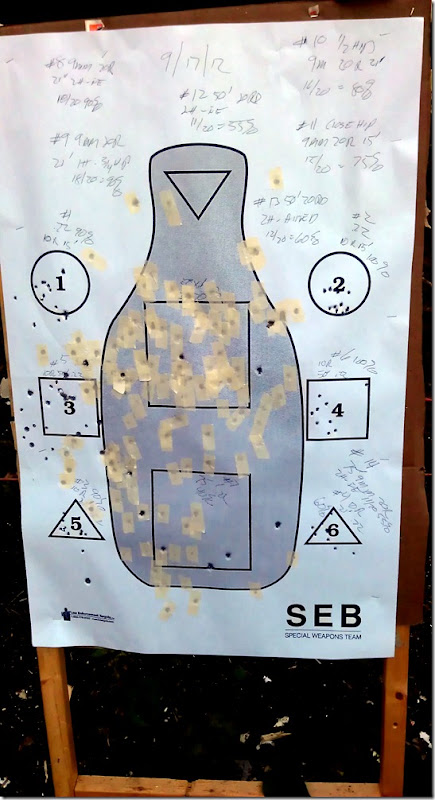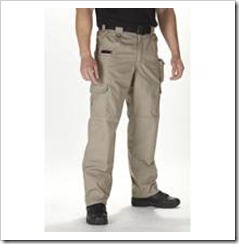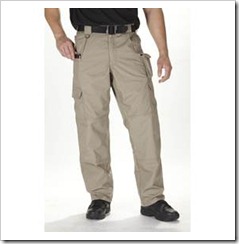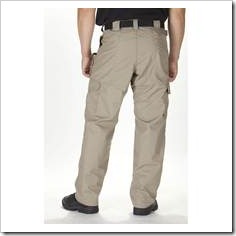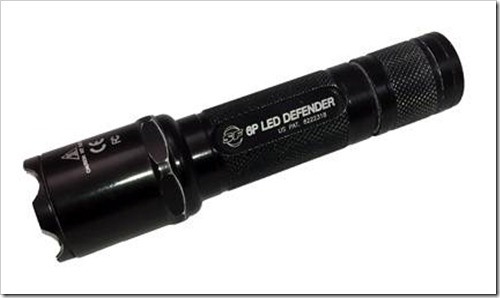A while back I did a couple posts about trimming time off your D.A.F. – Draw – Aim – Fire response. It’s the time it takes to go from your decision to draw until the first combat effect hit on the target. The discussions were based on a book entitled “Shooting to Live” by W.E. Fairbairn and E.A. Sykes and drew lessons from the 600 or so gun fights they had been in and had survived. I called the post “Seconds Count” and incorporated a number of images of the different positions they found particularly useful:
- 2-Handed, Full Extension
- ¾ Hip
- ½ Hip
- Close Hip
I followed this post with one about “A Range Day” – to encourage you to think before you go to the range and to go to the range with a course of action laid out in your mind’s eye. Why are you going? What are you going to work on? What are your goals? What weapons are you going to use?
What is missing from these two posts is the “action”. How does a shooter get from “here” to “there” while on the range. Still photos give hints – but to really get a flavor of working these four positions, I felt that video was needed.
I find a lot of value in folks who share their thoughts and ideas about different shooting grips, positions, styles and the like. Yet, without really “seeing” them in action, I am always left with questions after I read the articles. So, determined not to leave anyone “hanging”, I did a video trip to the range to go through these four drills from 21 feet, then I repeated the “Close Hip” from 15 feet, followed by the 2-Handed Full Extension from 50 feet and finished off with 2-Handed, Full Extension Aimed Fire from 75 feet.
Goals for the Day
- Multiple single handed draws from concealment for each position.
- A magazine change mid-drill from each position.
- Combat Effective Hits – 80% hit rate.
- Work through any weapon malfunctions as I go.
- Focus on smooth – not fast. (slow is smooth, smooth is fast)
- Not make a fool of myself – I’m a vain as the next guy!
What follows are both the video of each drill and an image of the target after the course of fire. I taped the target between each drill as well. My only error is that I forgot to take an image of the 2-handed, Full Extension drill at 50ft. Heavy sigh.
As I stated in my goals above, this was not about speed, but about smooth. Consistently repeating a drill so that it is smooth and sure will, over time, naturally increase its effective speed. Watching the video and timing them, it seems most are right at 2-seconds or perhaps just a shade less. Of course there’s also a few “oh shit” draws as well – but then what fun is it if you don’t see warts and all.
You should leave each and every range trip having learned something new and having discovered areas that need a bit (or perhaps a lot) of polish. If you’re not finding your “faults”, you’re not growing as a shooter. These are NOT problem areas, but areas that simply need more work. I’m sure you will spot plenty of them for me in these videos as well.
A few comments about “at speed” draws on a shooting range. Honestly, most ranges will not even allow a draw from a holster on a range. I understand the liability issues. I understand the fear of being being litigated out of existence. And yet, picking up a grounded weapon from a bench, loading and making ready, and then shooting a nice, tight group from a static position will NOT develop the muscle memory you need to save your life.
Obviously, diligent dry-fire on a “range” in your home will help. The use of a LaserLyte cartridge will help, airsoft will help. Yet, you need real range time. My only suggestion is to find a range, a piece of property or construct your own safe range where you can practice these skills. I am a firm believer that you need to experience live fire to gain full benefit of this type of range work.
All that said, lets get down to it – here are the drills, the videos and images of the results (aren’t camera phones great!). Let me know what you think.
2-Handed, Full Extension, 20 Rounds, 21 Feet
Position: 2-Handed grip, arms fully extended, your weapon abut 2-inches below your eye-level. Your focus is on the threat and the point you wish to hit the threat. Both eyes are open. This provides you the ability to clearly see the threat, their hands and the area around them. The video of this position looks like this:
Focal Point Shooting–Full Extension
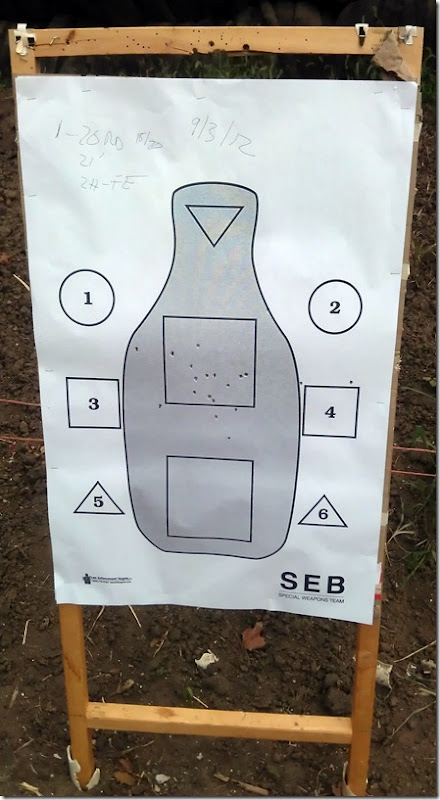
Result – 18/20 hits – 90%
¾ Hip, 20 Rounds, 21 Feet
Position: 1-Handed grip, dominant hand not quite fully extended, your weapon centered on the threat. Your focus is on the threat and the point you wish to hit the threat. Both eyes are open. This provides you the ability to clearly see the threat, their hands and the area around them. The video of this position looks like this:
Focal Point Shooting–3/4 Hip
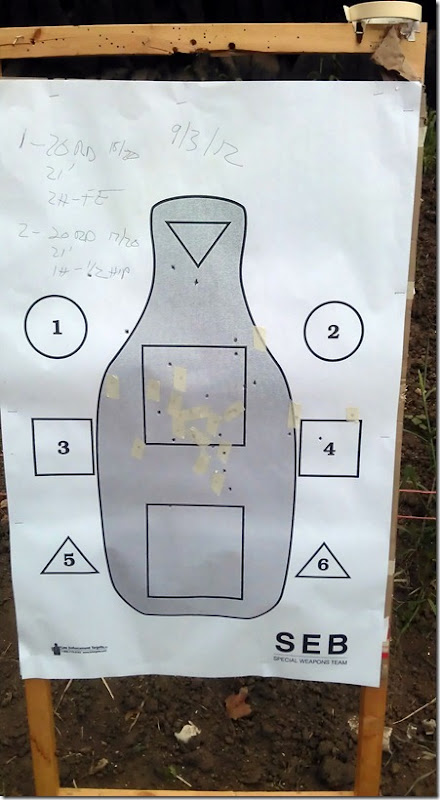
Result – 17/20, 85%
½ Hip, 20 Rounds, 21 Feet
Position: 1-Handed grip, dominant hand extended about ½ way to full extension, your weapon centered on the threat. Your focus is on the threat and the point you wish to hit the threat. Both eyes are open. This provides you the ability to clearly see the threat, their hands and the area around them. The video of this position looks like this:
Focal Point Shooting–1/2 Hip
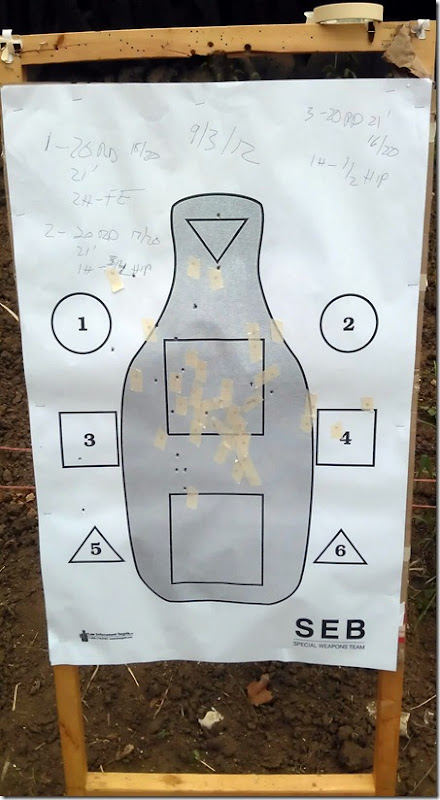
Result – 16/20, 80%
Close Hip, 20 Rounds, 21 Feet
Position: 1-Handed grip, dominant arm elbow is welded to your hip, your weapon centered on the threat. Your focus is on the threat and the point you wish to hit the threat. Both eyes are open. This provides you the ability to clearly see the threat, their hands and the area around them. The video of this position looks like this:
Focal Point Shooting–Close Hip 21ft
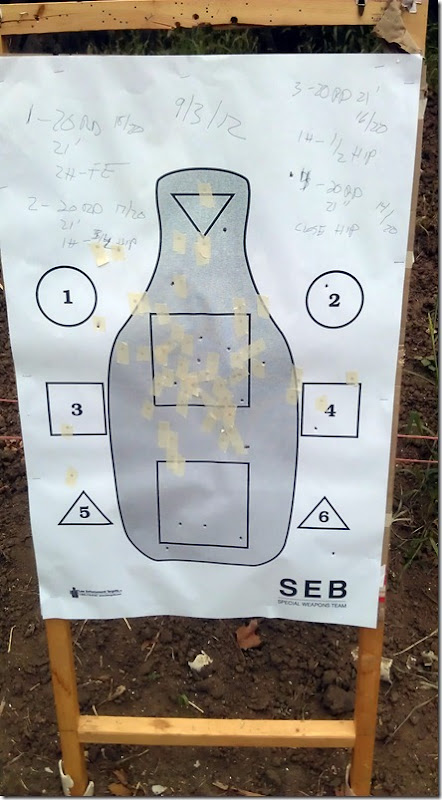
Results – 14/20 70%
Close Hip, 20 Rounds, 15 Feet
Position: 1-Handed grip, dominant arm elbow is welded to your hip, your weapon centered on the threat. Your focus is on the threat and the point you wish to hit the threat. Both eyes are open. This position is NOT for long range shooting. It is, however, well suited for the “up close and personal” encounter. I repeated the drill at 15 feet to see the difference 6-feet can make. The video of this position looks like this:
Focal Point Shooting–Close Hip 15ft
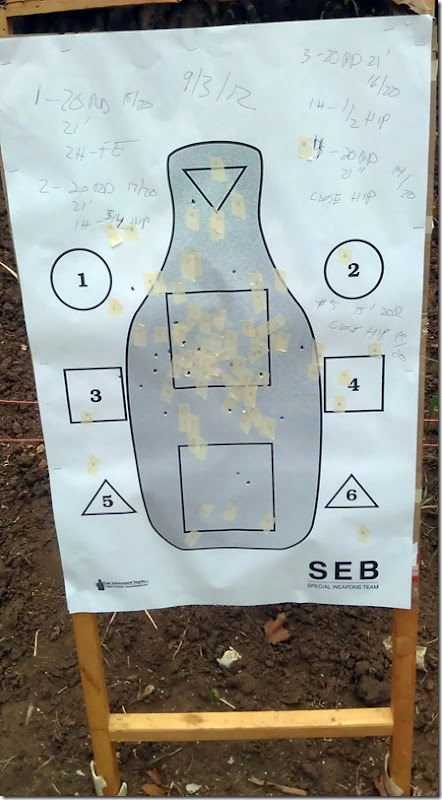
Result – 18/20, 90%
2-Handed, Full Extension, 20 Rounds, 50 Feet Position: 2-Handed grip, arms fully extended, your weapon abut 2-inches below your eye-level. Your focus is on the threat and the point you wish to hit the threat. Both eyes are open. This provides you the ability to clearly see the threat, their hands and the area around them. The video of this position looks like this:
Focal Point Shooting–2h Full Extension 50ft
Sorry, I forgot to take this image. However, the score seen on the image below indicates I shot 15/20 or 75%
2-Handed, Full Extension, 20 Rounds, 75 Feet
Position: 2-Handed grip, arms fully extended, both eyes are open. However, at this distance you can easily take advantage of the time you have – even with a “committed” threat to get a solid sight picture. It also provides you some time to attempt to dissuade the attacker from his intentions. The video of this position looks like this:
Focal Point Shooting–75ft–Aimed Fire

Results: 18/20, 90%
So there you have it – a complete range plan, video of its execution and the result of each drill. If you are willing to put detailed work in your range sessions, your growth as a shooter will change significantly. Time is precious, ammunition is expensive – it is about you getting the most “bang for your buck” (sorry, that was too easy) out of each and every range trip.
